| One of the
factors which to a considerable extent contributed to making Crete known
and loved in Western Europe is the screen version of Nikos Kazantzakis'
novel "Zorba the Greek" by the Greek-Cypriot film director
Michael Cacoyannis. |
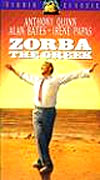
|
| At
the Cannes Film Festival 1954
the
cinematographer Walter Lassally was
recommend to Cacoyannis. One year later Lassally went to Athens, and they
started a long co-operation, which resulted in six films of which the best
known is probably "Zorba the Greek".
|
| The
film was shot in Crete
in four different locations:
|
|
|
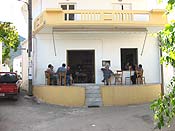
|
Kokkino
Chorio on the Apokoronas Peninsula. The scene of the men kidnapping the
widow's goat was shot in one of the coffee houses. And a number of
landscape scenes are from this village and from the area in general. |
|
Stavros
on the Akrotiri Peninsula. Here Zorba (Anthony Quinn) danced his famous
dance on the beach, and here you find the rock and the house of Basil
(Alan Bates), |
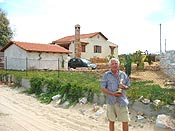
|
|
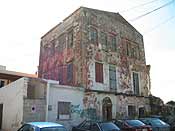
|
Kokkino
Metochi, where you can still see the house of Madame Hortense (Lila
Kedrova), |
| and
Chania Harbour, where among others the scenes from the harbour pub at the
beginning of the film were shot.
|
| Walter
Lassally was born by a Polish mother and a German father in 1926. He grew
up in Poland and in Berlin. Before World War II the family tried to flee
to Canada but was stranded in England.
|
| Walter
Lassally made his début, when the British Free Cinema Movement sprang up.
In addition to his many co-operations with directors such as Lindsay
Anderson (among others the famous documentary "Wakefield
Express" (1952) and "Thursday's Children" (1953)), Karl
Reisz and Tony Richardson, he wrote articles to "alternative"
journals such as "Film" in the 1950ies as a proponent for
personal low-budget films.
|
| He
has been working with a vast number of independent film companies and
co-operated with Michael Cacoyannis on six films (among others "A
Girl in Black" (1956), "Electra" (1961) and "Zorba the
Greek" (1964)). For the latter Lassally received an Oscar for best Cinematography,
Black-and-White in 1965, but unfortunately he was not able to participate
in the prize giving, as he was already busy with new filming in Canada.
Nowadays you can admire the coveted statuette in the restaurant Christiana
in Stavros.
|
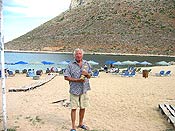
|
| Lassally
has also been the cameraman on a number of Ismail Merchant and James Ivory
productions (among others "Savages" (1972), "Heat and Dust"
(1983) and "The Bostonians" (1984)).
|
|
| With
his love for smaller, independent and international productions and his clear
and crisp style, Lassally
continued his work in newer time with films like "The Ballad of the
Sad Cafe" (1991).
|
|
In
1998 Walter
Lassally moved permanently to Stavros so that he every day can enjoy the
sight of the beautiful Stavros rock, which means so much to him. He
himself mentions that one of the lines, which made the strongest
impression on him during the shooting of the film, is the scene where
Zorba is sitting on the beach making a model of the mountain of which they
are going to bring the tree trunks down. Basil comes to him and asks what
exactly he is doing:
|
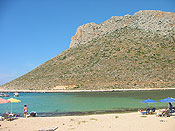
|
|
|
Basil: |
What
is it? |
|
|
Zorba:
|
It's
a mountain. That
one! |
|
|
|
|
|
The
23rd October 2017 Lassally passed away at the Hospital of Chania, where he
was under treament for some time. |
|
|
|
|
|
|
|





